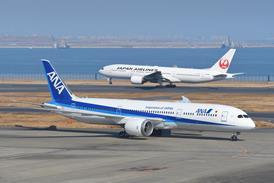GÜNTER ENDRES LONDON
Increased tourist traffic, a programme of cost reductions and rationalistion of the fleet and route network have significantly improved Air Malta's financial and operating performance as it prepares to join Europe's aviation market.
The Air Malta Group recorded a record turnover in the financial year to end March 1999 of Lm108 million ($270 million), up 6% over the year before, and a respectable pre-tax profit of Lm6.2 million, compared with just Lm0.6 million the previous year. In 1996 is made a loss of Lm2.1million.
The figure of 1.6 million passengers was also a record, beating the previous year's by 11%. The increase in passenger numbers also boosted Air Malta's share of traffic into and out of the Maltese islands by three points to 57%.
This carrier's results in 1999 will be negatively affected by a capacity increase of two aircraft with associated expensive bridging leases, which became necessary to sustain the tourist market following the withdrawal of a number of German competitors early in 1999, says chairman Louis Grech. This, he says, is costing the airline "millions" of liri, because it is difficult to sustain such an increase in capacity at the low yields prevalent in this market. The Air Malta Group generates 24% of the country's tourism earnings.
A three-year business plan is being drawn up, with a focus on restructuring in preparation for integration into Europe's unified air transport regime. A revamp of the airline's corporate image and in-flight service will be implemented during 2000.
Source: Airline Business























